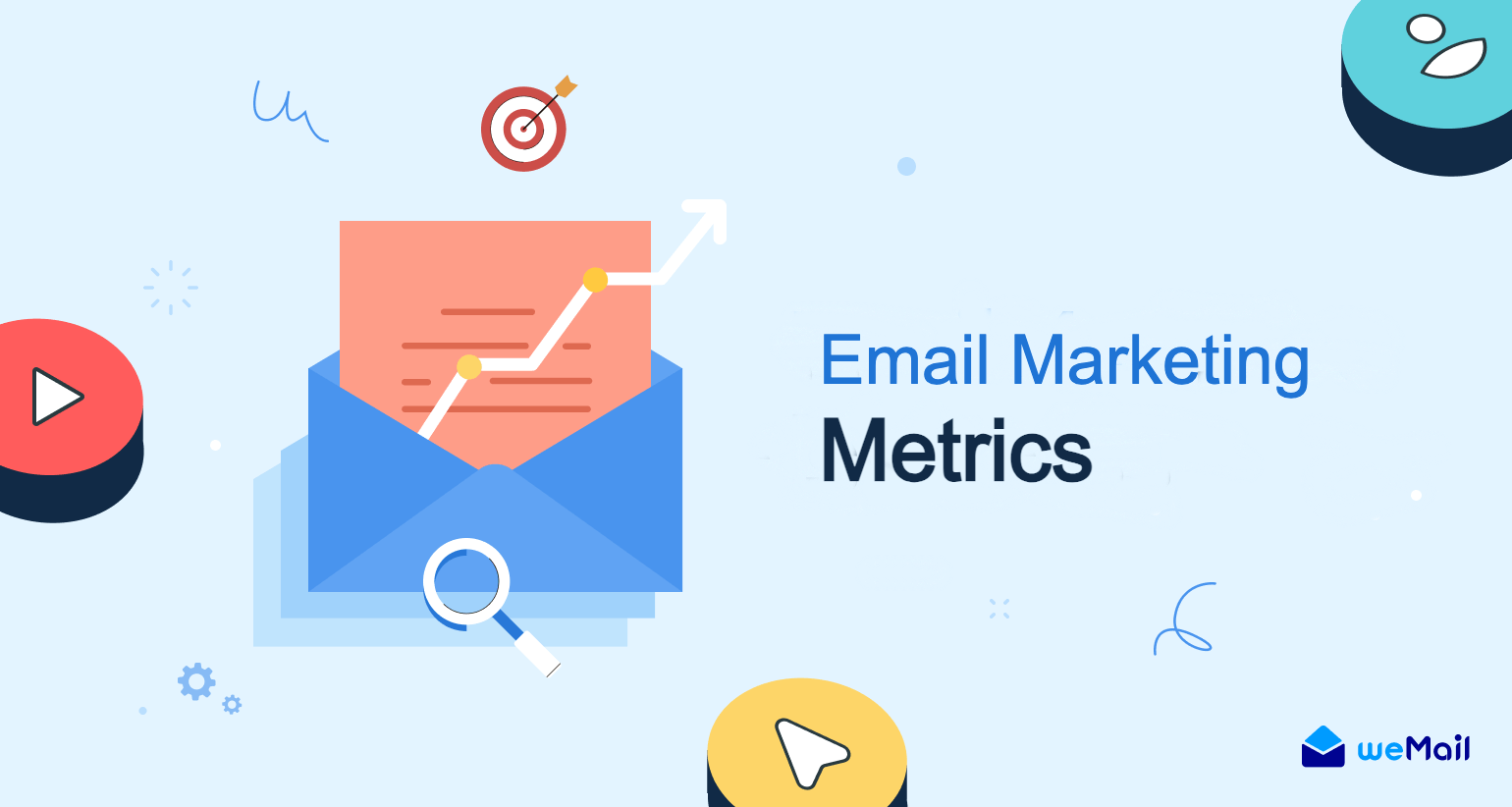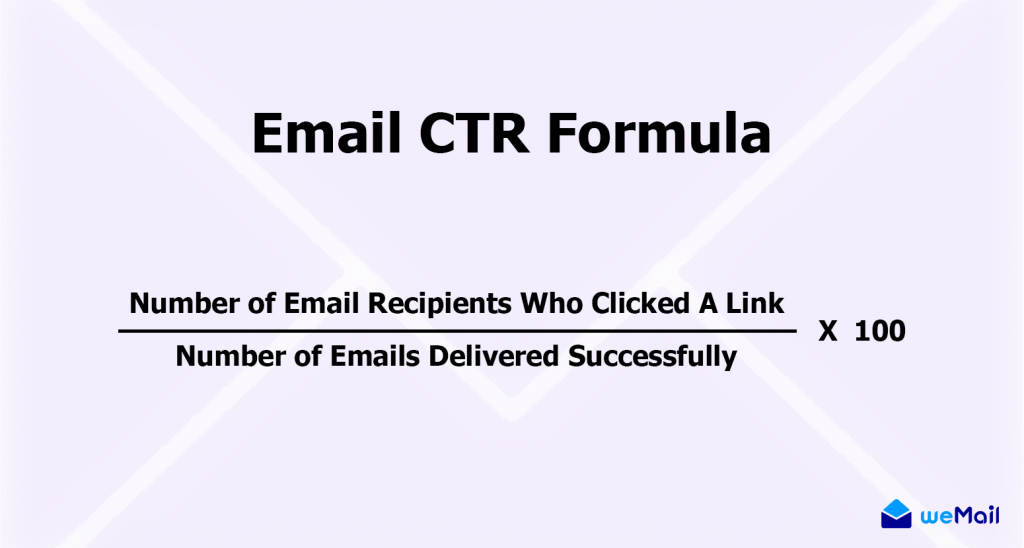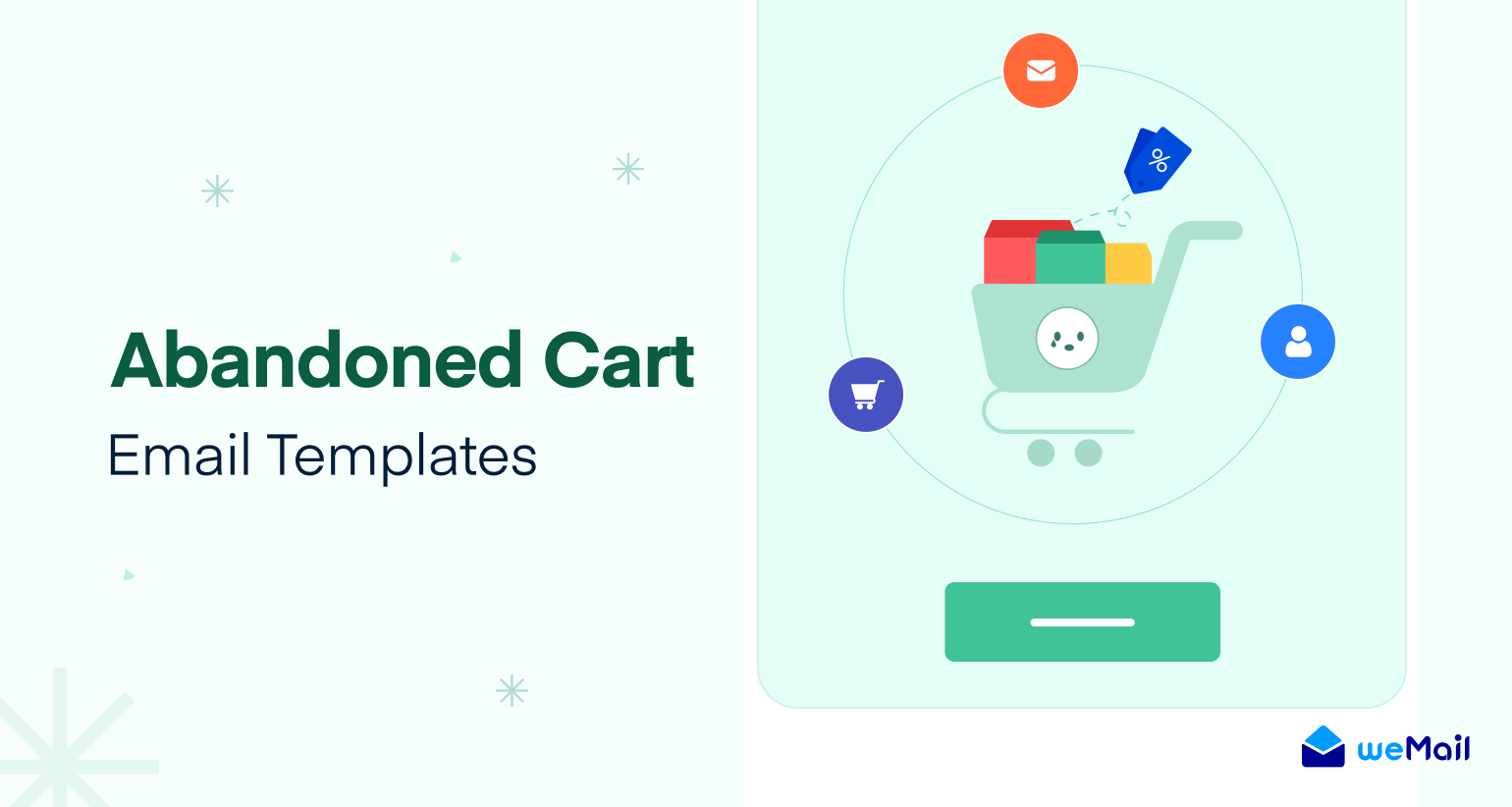Essential Email Marketing Metrics to Learn (Plus how to Improve them)

One lovable aspect of email marketing is it’s completely measurable. Unlike most channels, email marketing lets you know how your efforts are performing. That is reflected in the high ROI too.
Also, as a marketer, it’s one of your core jobs to track the email marketing performance. So, learning about must-have email KPIs is essential.
Let’s start reading this article to accomplish this goal. Here we’ve covered what is email KPIs, which email marketing metrics you should track, and how to improve them.
Top Email Marketing Metrics to Look

Email marketing metrics provide valuable insights into the effectiveness of your email campaigns.
By regularly monitoring these metrics and making data-driven adjustments to your email marketing strategy, you can improve engagement, increase conversions, and ultimately achieve your marketing goals.
Here are the top metrics you should look at now –
- Click-through rate
- Email delivery rate
- Bounce rate
- Open to click rate
- Email Conversion Rate
- Unsubscribe rate
- List growth rate
1. Click-through rate
The click-through rate lets you know how many people have clicked the link in your email.
It’s the very first thing you want to count on nowadays as email open rates become vague. After Apple introduced MPP (Mail Privacy Protection), the fate of the email rate is in limbo. The feature (if allowed by the user) can be able to pre-open or download the email after it gets into a system.
So, there is only one way: you must track those people who have opened your email and then click on a link included in the email.
Here’s how to calculate the email click-through rate –
Email CTR = Number of People Who Clicked A Link / Number of Emails Delivered Successfully x 100

How to Improve Email CTR
Different industries maintain a different standard for a good email click-through rate, though, on average, a 2.6% CTR is cool for your business.
Let’s find out some of the best ways to improve a low email CTR –
Segmenting email list
You can divide your email list into smaller segments based on the user demographics, behavior, or their purchase history. It will help to send more targeted and relevant emails to different segments or groups.
Write the most compelling subject-lines

About 64% of email recipients decide to open or delete an email based on the subject lines. So, one of the best things to get your email a good click-through is to write something that sparks an interest.
Clear call to action (CTA)
Unless your call-to-action says it right, you can’t get the user to click your link. So, here’s the best way to add a CTA to your email that works –
- Use buttons for your CTA
- Write the most focused and attractive CTA copy
- Find the right placement
Also Read: What is Email CTR and How to Improve It
1. Email Delivery Rate

Email delivery rate, also known as deliverability rate, is a crucial email marketing metric that measures the percentage of sent emails that successfully reach the intended recipients’ inboxes without bouncing or being marked as spam. In other words, it represents the proportion of emails that were delivered to the recipients’ primary email folders.
To calculate the email delivery rate, check this equation –
Email Delivery Rate = (Total Delivered Emails / Total Sent Emails) x 100
Here’s what each component means:
Total Delivered Emails: The number of emails that were successfully delivered to the recipient’s email servers or mailboxes. These emails have bypassed any technical issues or spam filters that might have prevented their delivery.
Total Sent Emails: The total number of emails you attempted to send as part of your email marketing campaign.
How to improve your email delivery rate

- Maintain a Clean Email List: Regularly clean your email list to remove invalid or inactive email addresses, reducing the likelihood of bounces and improving your sender reputation.
- Authenticate Your Emails: Implement email authentication methods like SPF (Sender Policy Framework), DKIM (DomainKeys Identified Mail), and DMARC (Domain-based Message Authentication, Reporting, and Conformance) to prove the authenticity of your emails.
- Comply with Regulations: Ensure compliance with email marketing regulations, such as the CAN-SPAM Act (in the United States) or GDPR (in Europe), to avoid legal issues that could impact deliverability.
- Use a Reputable Email Service Provide: Choose a reputable ESP with a track record of good deliverability and sender reputation.
By focusing on maintaining a high email delivery rate, you increase the chances of your email marketing campaigns reaching your audience effectively, which can lead to higher engagement, conversions, and overall success in your email marketing efforts.
2. Bounce Rate

Email bounce rate is a metric that measures the percentage of email messages that were not successfully delivered to the recipient’s inbox. Instead, these emails “bounce” back to the sender, indicating that they were not delivered for some reason.
Email bounces can occur for various reasons. To learn that, you should also know that there are mainly two types of email bounce –
a. Hard Bounce
A hard bounce occurs when an email cannot be delivered to the recipient’s address due to a permanent or long-term issue. Some common reasons for hard bounces include:
- Invalid or non-existent email addresses.
- The recipient’s domain does not exist.
- The email server has blocked the sender’s domain or IP address.
- The recipient’s mailbox is full.
- The email address is misspelled or contains typos.
Hard bounces are typically removed from your email list because they indicate that further attempts to send emails to these addresses are unlikely to succeed.
b. Soft Bounce
A soft bounce, on the other hand, is a temporary failure to deliver an email. Soft bounces can occur for various reasons that are usually temporary, such as:
- The recipient’s mailbox is temporarily unavailable (e.g., the server is down for maintenance).
- The recipient’s inbox is over its storage limit, but not yet full.
- The email message is too large to be delivered.
Soft bounces may be reattempted in subsequent email sends because the issue causing the bounce is often expected to be resolved.
How to Optimize Your Email Bounce Rate
Improving your email bounce rate is essential for maintaining a good sender reputation and ensuring that your emails reach your intended recipients. Here are some steps you can take to address and reduce email bounce rate issues –
- Use Double Opt-In
- Regularly Clean Your Email List
- Segment Your Email List
- Monitor your bounce reports
- Update inactive subscribers
- Check email content
- Authenticate your email domain
- Monitor your email sending frequency
- Stay compliant with the user
- Go for a well-reputed email service provider, etc
Reducing email bounce rates requires ongoing effort and attention to email list quality and email marketing best practices.
Also read: How to reduce your email bounce rate
3. Open to Click Rate
The email open-to-click rate (OTC rate) is a key performance indicator (KPI) used in email marketing to measure the effectiveness of an email campaign in engaging recipients and driving them to take a specific action, typically by clicking on a link within the email.
Here’s how you calculate the email open-to-click rate:
Email Open-to-Click Rate (%) = (Number of Clicks / Number of Opens) x 100
In this formula:
- “Number of Clicks” represents the total number of unique clicks on links within the email.
- “Number of Opens” represents the total number of unique email opens.
A high open-to-click rate suggests that your email content, design, and call-to-action are effective in engaging recipients and motivating them to take action, such as visiting your website, making a purchase, or signing up for a webinar.
Conversely, a low open-to-click rate may indicate that although recipients opened your email, they did not find the content or the call-to-action sufficiently appealing or relevant to take the next step.
How to Improve Open-to-Click Rate

Improving your email open-to-click rate (OTC rate) is crucial for increasing the effectiveness of your email marketing campaigns and driving more conversions. Here are some strategies to help you boost your OTC rate –
Optimize Email Content
Craft compelling and engaging email content, including attention-grabbing subject lines and clear, concise, and persuasive messaging.
Test Different Elements
Conduct A/B testing to experiment with different email elements, such as subject lines, email copy, images, and CTA buttons, to determine what resonates best with your audience.
Timing Matters
Pay attention to the timing of your email sends, as the day and time can impact open and click-through rates.
Analyze Data
Regularly analyze your email campaign data to identify trends, patterns, and areas for improvement.
Test Links
Make sure all links within your email are functional and lead to the intended destination.
The email open-to-click rate is just one of many email marketing metrics used to assess the performance of email campaigns. By monitoring and optimizing this metric, you can refine your email marketing strategy and achieve better results in terms of engagement and conversions.
4. Email Conversion Rate
Email conversion rate, in the context of email marketing, is a metric that measures the percentage of email recipients who took a specific desired action as a result of your email campaign. This action typically aligns with your campaign’s goals and objectives and can vary depending on the nature of your email marketing efforts.
The formula for calculating the email conversion rate is as follows:
Email Conversion Rate (%) = (Number of Conversions / Number of Emails Delivered) x 100
In this formula:
- “Number of Conversions” refers to the total number of recipients who completed the desired action you specified in your email campaign. This action could be making a purchase, signing up for a webinar, filling out a form, or any other predefined goal.
- “Number of Emails Delivered” represents the total number of emails that were successfully delivered to recipients’ inboxes, excluding bounces.
The email conversion rate is a critical metric because it directly measures the effectiveness of your email marketing efforts in achieving your intended outcomes. A higher email conversion rate indicates that your email campaign successfully motivated recipients to take the desired action, whether it’s making a purchase or engaging with your content.
How to Improve Email Conversion Rate
The email conversion rate is a critical metric for assessing the impact of your email marketing efforts on your business or organization’s goals. Here are the best ways to improve them –
- Clearly Define Goals: Determine clear and specific goals for your email campaign. Know what action you want recipients to take, and make it prominent within your email.
- Personalization: Use dynamic content and personalization to tailor your emails to individual recipients’ preferences and previous interactions.
- A/B Testing: Conduct A/B tests to experiment with different email elements, such as subject lines, email copy, images, CTA buttons, and sender names, to determine what resonates best with your audience.
- Landing Page Optimization: Ensure that the landing page where recipients are directed after clicking through from the email is optimized for conversions. The messaging should align with the email content.
- Follow-Up Emails: Consider using follow-up emails to nurture leads and encourage conversions for subscribers who didn’t convert on the first email.
- Testimonials and Reviews: Incorporate customer testimonials, reviews, or social proof within your emails to build trust and credibility.
- Provide Incentives: Offer incentives, discounts, or exclusive offers to motivate recipients to take action.
By optimizing your email campaigns based on this metric, you can increase the likelihood of achieving the desired outcomes and generating a positive return on your email marketing investment.
5. Email Unsubscribe Rate
The unsubscribe rate is a key metric in email marketing that measures the percentage of recipients who choose to opt-out or unsubscribe from your email list after receiving an email campaign.
It’s a crucial metric for email marketers because it reflects the number of people who no longer wish to receive emails from your organization or business.
The formula for calculating the unsubscribe rate is as follows:
Unsubscribe Rate (%) = (Number of Unsubscribes / Number of Emails Delivered) x 100
Here’s how the formula works –
- “Number of Unsubscribes” refers to the total number of recipients who have chosen to unsubscribe after receiving the email.
- “Number of Emails Delivered” represents the total number of emails successfully delivered to recipients’ inboxes, excluding bounces.
What Does a Higher Unsubscribe Rate Mean
A high unsubscribe rate means your emails are turning the subscriber bored. Or, maybe you’ve sent something for a long time that lacks the exact value they hoped for. Some of the top reasons also suggest –
- Sending irrelevant content
- Lack of quality content in email
- You are not maintaining a proper email-sending frequency
- Bad email segmentation, etc
Well, let’s find out how to resolve the problem.
How to Reduce Email Unsubscribe Rate
The best way to manage your subscriber list and keep the subscription rate on the lower side, do the following –
- Provide Value: Ensure that your email content is relevant, informative, and valuable to your subscribers. Communicate the benefits of remaining subscribed to your emails.
- Segment Your List: Segment your email list based on recipient preferences, behaviors, or demographics. Send targeted content that matches the interests of each segment.
- Frequency Control: Pay attention to the frequency of your email sends. Consider letting subscribers choose their email frequency or preferences.
- Opt-Out Process: Make the unsubscribe process easy and straightforward for recipients. Include an unsubscribe link in every email, and promptly honor unsubscribe requests.
- A/B Testing: Experiment with different email elements, such as subject lines, content, and calls to action, to see what resonates best with your audience.
Besides the aforementioned ways, you must monitor the feedback of your subscribers and customers, and improve your overall email experience.
6. List Growth Rate

List growth rate refers to the rate at which your email or contact list is growing over a specific period. It’s an important metric for businesses and organizations engaged in email marketing, as the size and quality of your email list can significantly impact the success of your email campaigns.
To calculate the list growth rate, you can use the following formula:
List Growth Rate (%) = [(Number of New Subscribers – Number of Unsubscribes – Number of Email Addresses Removed) / Total Number of Contacts at the Beginning of the Period] x 100
In this formula:
- “Number of New Subscribers” represents the total number of new email subscribers acquired during a specific time frame.
- “Number of Unsubscribes” refers to the total number of people who unsubscribed or opted out of your email list during the same period.
- “Number of Email Addresses Removed” includes email addresses that were removed from your list for various reasons, such as bouncing emails, inactive subscribers, or email addresses that have become invalid.
- “Total Number of Contacts at the Beginning of the Period” is the number of email contacts you had at the start of the specified time frame.
A positive list growth rate indicates that your email list is expanding, while a negative rate suggests a decline in your list size.
How to Improve Your List Growth Rate
To improve your list growth rate and maintain a healthy email list, consider these strategies –
Promote Sign-Up Forms: Place email sign-up forms prominently on your website, landing pages, and social media profiles.
Use Pop-Ups and Exit-Intent Forms: Implement pop-up or exit-intent sign-up forms to capture the attention of website visitors before they leave.
Leverage Social Media: Promote your email sign-up on your social media channels to reach a broader audience.
Host Webinars or Contests: Host events or contests that require participants to subscribe to your email list for entry.
Segment Your List: Segment your email list based on subscriber interests and behaviors to send more targeted and relevant content.
Regularly Clean Your List: Remove inactive or unengaged subscribers to maintain list quality and deliverability.
Avoid Purchased Lists: Never buy email lists, as this can result in poor list quality and potential legal issues.
Respect Privacy and Permissions: Clearly communicate how often you’ll send emails and what type of content subscribers can expect. Honor unsubscribe requests promptly.
Test and Optimize: Continuously test different sign-up forms, incentives, and strategies to find what works best for your audience.
The list growth rate is a critical metric to monitor because it reflects your ability to expand your audience and engage with potential customers or supporters.
By implementing effective list-building strategies and maintaining list quality, you can achieve positive list growth and enhance the success of your email marketing efforts.
Why Tracking Email KPIs Are Necessary

Tracking email Key Performance Indicators (KPIs) is necessary for several important reasons in the realm of email marketing:
Performance Assessment
Email KPIs provide a quantitative way to measure the success of your email marketing campaigns. They offer insights into how well your emails are performing and whether they are meeting your goals.
Data-Driven Decision Making
By tracking KPIs, you can make informed decisions about your email marketing strategy. If you notice that certain metrics are underperforming, you can adjust your tactics and content accordingly to improve results.
Goal Alignment
KPIs help ensure that your email campaigns are aligned with your overall business objectives. Whether your goal is to increase sales, drive website traffic, or boost customer engagement, KPIs help you measure progress toward these goals.
Optimization
Email marketing is highly competitive, and optimizing your campaigns is crucial to staying ahead. KPIs highlight areas where improvement is needed, enabling you to refine your strategies, content, and targeting for better results.
Resource Allocation
Tracking KPIs allows you to allocate your resources (time, budget, and personnel) more effectively. You can identify which campaigns and tactics are most successful and allocate resources accordingly.
Audience Insights
KPIs provide insights into your audience’s behavior and preferences. By understanding what resonates with your subscribers, you can create more personalized and engaging content.
List Health
Metrics like bounce rate and unsubscribe rate help you monitor the health of your email list. A high bounce rate, for example, may indicate the need for list cleaning or validation.
Reputation Management
Email sender reputation is crucial for email deliverability. Monitoring engagement metrics like open and click-through rates can help you maintain a positive sender reputation with email service providers.
ROI Measurement
Email marketing often involves a significant investment in terms of time and resources. KPIs enable you to calculate the return on investment (ROI) for your email campaigns, helping you justify and refine your email marketing budget.
Continuous Improvement
Successful marketing is an iterative process. By consistently tracking KPIs, you can identify trends and make ongoing improvements to your email marketing strategy, resulting in better performance over time.
Compliance
Email marketing is subject to various legal regulations, such as the CAN-SPAM Act and GDPR. Tracking metrics like opt-in rates and unsubscribe rates can help you ensure compliance with these laws.
Competitive Analysis
Monitoring KPIs allows you to benchmark your email marketing performance against competitors.
This can provide valuable insights into where you stand in your industry and help you identify areas where you can outperform your competitors.
Closing Up
There are other email marketing metrics like email reading time, email sharing, spam-compliant rate, etc. However, we believe we’ve discussed the major email metrics you must learn to improve your overall marketing process.
So that’s all for today. Let us know if you have any further questions.



